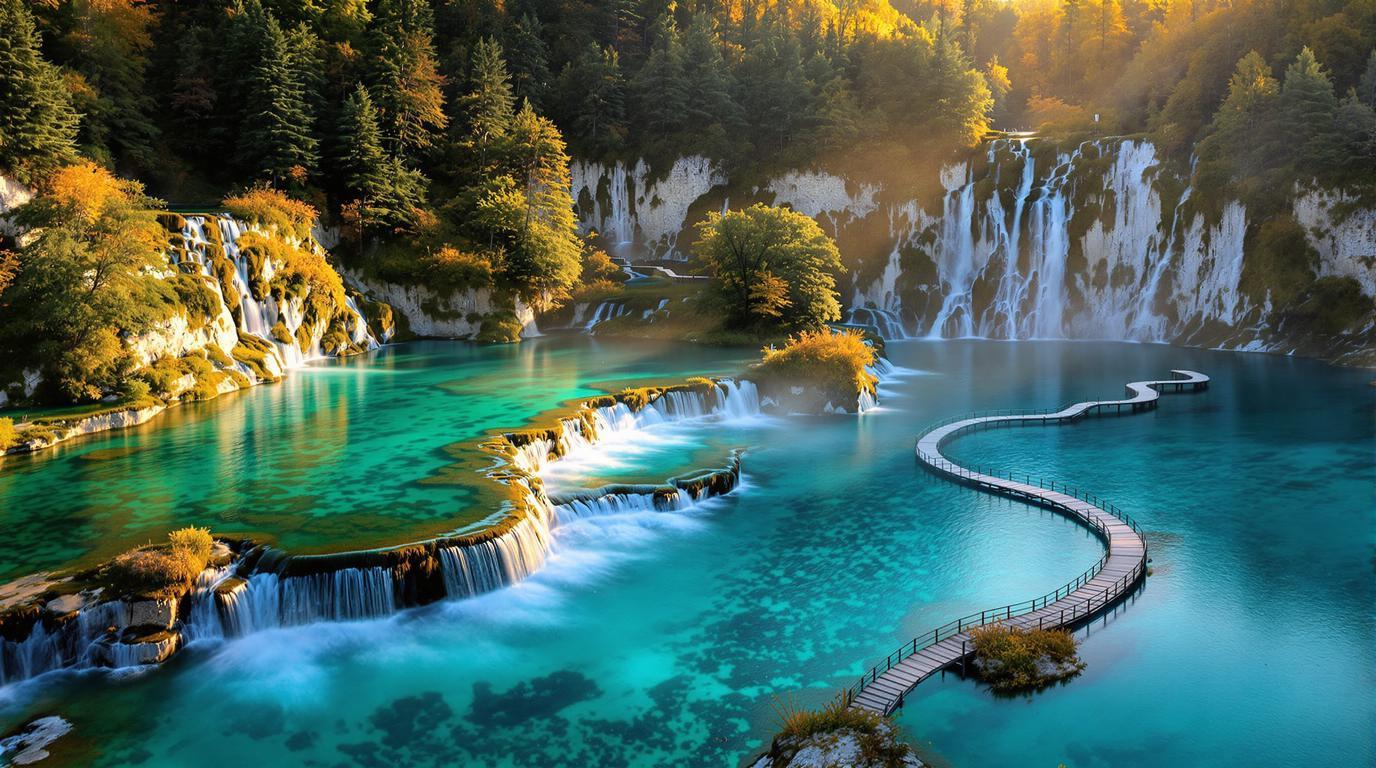Croatia’s Plitvice Lakes: Where Terraced Waterfalls Create Nature’s Perfect Symphony
A hidden masterpiece of cascading turquoise
The Plitvice Lakes National Park transforms an ordinary forest into an extraordinary aquatic wonderland. This UNESCO World Heritage site spans nearly 30,000 hectares in central Croatia’s Lika-Senj region, where 16 terraced lakes cascade into each other through a series of waterfalls. What makes these waters truly magical isn’t just their existence, but their ever-changing mineral composition that creates an almost unreal turquoise hue that shifts with the sunlight.
“These lakes aren’t static—they’re constantly reshaping themselves. The travertine barriers forming the waterfalls grow about 1cm annually, continuously transforming the landscape,” explains Dr. Marko Vučetić, a local geologist who has studied the park for decades.
A network of wooden pathways suspended over water
The genius of Plitvice’s design lies in its wooden boardwalks that hover just above the water’s surface, allowing visitors to walk directly over cascading falls and alongside the edges of crystal-clear pools. These handcrafted pathways create an immersive experience unlike anywhere else in Europe, bringing you close enough to feel the spray of Veliki Slap—the park’s impressive 78-meter waterfall that thunders down limestone cliffs.
Four seasons, four completely different parks
Visit in spring to see wildflower meadows carpeting the surrounding forests as waterfalls reach peak flow from melting snow. Summer brings lush greenery and perfect swimming conditions in the surrounding areas (though swimming is prohibited within the park). Fall transforms the landscape into a painter’s palette of amber, crimson and gold, while winter often freezes waterfalls into magnificent ice sculptures that few tourists ever witness.
The ultimate photographer’s paradise
For photographers chasing the perfect shot, the Upper Lakes region offers fewer crowds and more intimate compositions. The Proscansko Lake area provides serene reflections at dawn, while the Kozjak Lake Bridge creates perfect symmetry between water and sky. Lovers of clear waters will find Plitvice’s mineral-rich pools rival even the most celebrated Mediterranean coastlines.
Strategic timing for a crowd-free experience
With over a million annual visitors, finding solitude requires strategy. Ana Kovač, a local guide, recommends: “Arrive at 7 am when the park opens, or after 4 pm when day-trippers depart. The hidden viewpoints most tourists never find are along the less traveled ‘K’ routes in the upper section.”
Wildlife encounters in the Dinaric wilderness
Beyond the waters, Plitvice harbors European brown bears, wolves, and over 160 bird species. Dawn or dusk brings opportunities to spot red deer emerging from beech forests or golden eagles soaring above limestone cliffs. Much like more famous medieval landscapes elsewhere, the park has its own unique historical significance.
Local cuisine that rivals the scenery
The surrounding Lika region offers hearty mountain fare that perfectly complements a day of exploration. Try rakija (fruit brandy) and local cheese alongside spit-roasted lamb in family-run restaurants in nearby villages. While not quite a culinary capital, the authentic Croatian cuisine here offers a delicious window into local traditions.
Practical tips for the perfect visit
Book tickets online to skip entrance queues, especially during summer. The park operates year-round with reduced hours in winter. Consider staying overnight in nearby guesthouses to experience the park at dawn when morning mist creates an otherworldly atmosphere over the lakes. Unlike some vehicle-free destinations, Plitvice offers shuttle buses within the park, though the true magic is discovered on foot.
Plitvice isn’t merely a destination—it’s a reminder of water’s incredible power to shape landscapes and create beauty. As sunshine filters through beech forests onto dancing cascades, you’ll understand why locals consider this place not just a national treasure, but the beating heart of Croatia’s natural identity.
